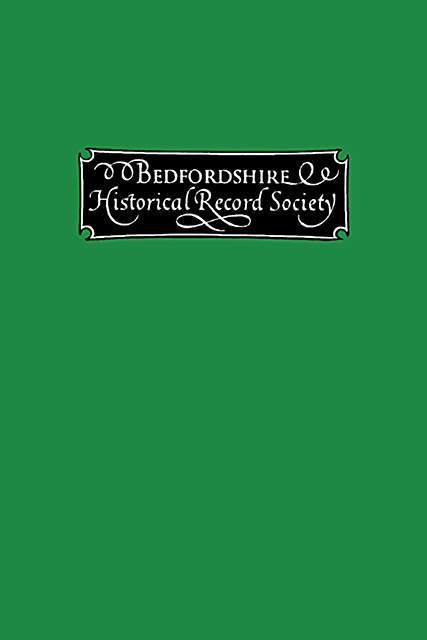Appendix: Map of The Shires and Hundreds
Published online by Cambridge University Press: 14 July 2023
Summary
The Map has been drawn to show diagrammatically the probable distribution of the vills in the various Hundreds of Beds, and Bucks, during the reign of Richard I; in order to enable the reader to find their position, an index has been supplied to the map. The County boundaries are shown by a thick black line; the Hundred boundaries by conventional signs of line dot and dash. These boundaries are necessarily approximations, as being based on the present parish boundaries. The Manors of Ancient Demesne appear to have been extra-hundredal at this period; they are shown as islands in the Hundred, and are marked A.D.; the two royal Burghs, also extra-hundredal, are marked R.B. To the modern parishes and old manors on our Rolls, some, not mentioned on our Rolls, have been added, in order to increase the usefulness of the map.
The Hundred is believed to be the oldest unit of administration in England. With the centralisation of government, the system became obsolescent about the middle of the xixth century, and it is to be regretted that the old areas were not revived for the Sanitary and Rural Districts established under a later theory of decentralisation. The organisation of the two Shires under Hundreds is evidently dissimilar.
In Bucks., though some of the eighteen Hundreds are very small, none is styled a Half Hundred. In the xijth and xiijth centuries each Hundred remained distinct, but in the Feudal Aid Rolls of 1302/3 Cotteslowe and Mursley Hundreds are united in one return, and all the eighteen are arranged in the groups of three under which they are actually set out in the Feudal Aid Rolls of 1316. At the disappearance of the Hundred system, the only recognised Hundreds684 were those shown in the third column of the following table, the last three (Desborough, Burnham, and Stoke) still retaining their separate identity, and together forming the three Chiltern Hundreds of which the Steward is a Royal officer, and is therefore unable to sit in Parliament.
In Beds, three smaller areas are termed Half Hundreds, shown in the table by (|).
- Type
- Chapter
- Information
- The Publications of the Bedfordshire Historical Record Society , pp. 256 - 259Publisher: Boydell & BrewerFirst published in: 2023



